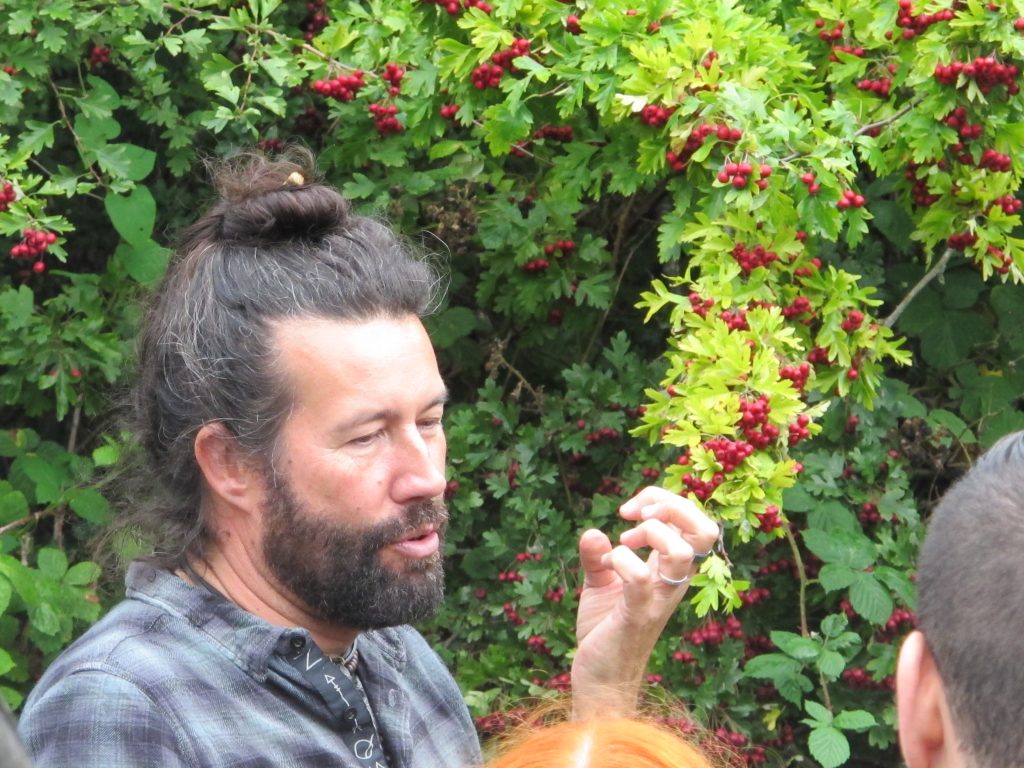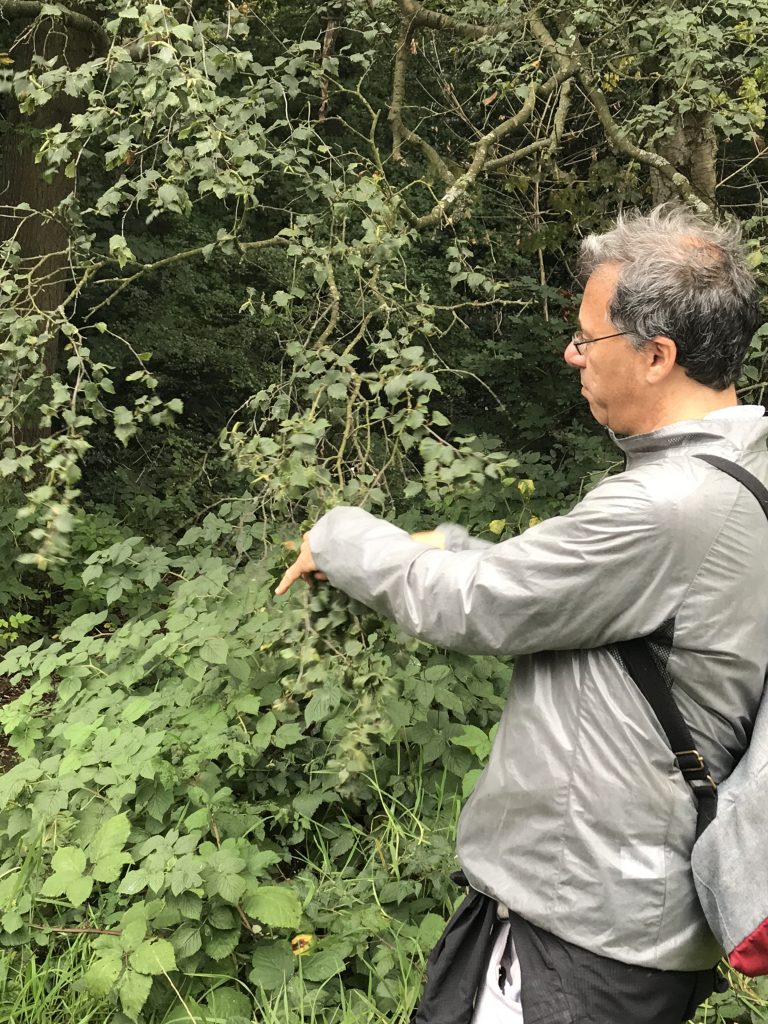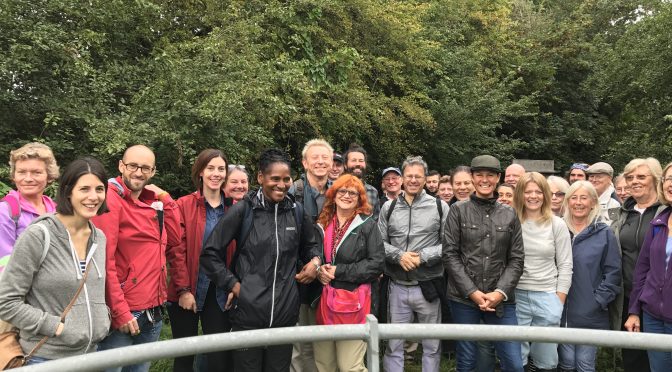Finding food in the Park
Sunday 10 September saw the much-anticipated Foraging Walk take place at Shrewsbury Park. Around 35 local people attended the walk to learn which hedges, plants and trees to forage from, but also those to avoid. The park offers a huge array of plants which can be used as food in a raw state, cooked, or in the form of teas. Amongst others they sampled cherry plums, hops, sloes, ground elder, burdock, horseradish, yarrow and raspberries.
Kevin Godby, a local expert who works for Greenwich Co-operative Development Agency (GCDA) on their Growing Greenwich Project demonstrated how to find the seeds, berries and fruit and how to safely consume them. He shared home-made jam and produce that he had made from berries found in the park, pointing out where they grew as he went along the trail.

Kevin said: “It’s important to remember that foraging is about eating a little from a range of different fruit and not lots from one place, as the body needs variety and too much from one place can tip the balance the wrong way.”
Kris Inglis, Chair of FSP said “we have all learnt so much about what we can and can’t consume from the hedgerows. It is amazing to find so much in one space, which will change with every season. Until today we knew little of this intriguing aspect of the park.”

Michael Stuart, a keen forager from Kilburn also attended to offer his experience; his key advice is to observe an area to get to know it and see how it changes through the seasons which will lead to a deeper appreciation of the environment. He recommends winter and spring for the variety of fresh leaves available to add to salad.
By Sandra Bauer
Foraging finds:
- Hogweed
- Mustard
- Cherry plums
- Hops
- Sloes
- Hawthorn berries
- Ground elder
- Ash key
- Elderberries
- Burdock
- Horseradish
- Yarrow
- Raspberries
- Acorns
- Birch syrup – harvest in march
- Chickweed
- Oregon grape
- Lime tree

